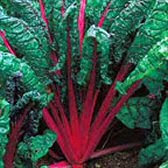Broccoli, Food Essentials diabetes
Predicate as a superfood broccoli does not need to doubt. So much research that shows how this food is rich in natural substances-substances that beneficial for health.
A latest research in the UK have the broccoli important substances that are able to restore function and improve blood vessel that is damaged due to diabetes. Researchers from the University of Warwick believes, a substance called sulforaphane, the role has a major role in restoring the blood vessel again.As published in the Journal Diabetes, sulforaphane can stimulate production of enzyme's that can protect the blood vessel and lower molecules that cause damage to cells in a significant way. Vegetable -type brassica vegetables- like broccoli is associated with the previous low risk of heart attack and stroke.
People who have a diabetes risk was greater up to five times kardiovaskuler have a contagious disease such as heart attack and stroke, which both also associated with damage to cells of blood vessel.
In research, the team from the University of Warwick, to test the influence of sulforaphane in cells of blood vessel damage due to high blood sugar (hiperglikemia), which is closely associated with diabetes.
They noted the 73 percent reduction of molecules called reactive body Oxygen Species (Ros). Hiperglikemia can cause a degree Ros increased threefold and the high molecular level this can damage body cells. Researchers also found that sulforaphane activate a similar protein in the body called nrf2, which can protect cells and tissue damage with antioxidants and how to activate enzyme's detoxification.
"Our research indicates that substances like sulforaphane in broccoli may help block the process associated with the development of blood vessel disease in diabetes. In the future, an important means for research to test whether the brassica vegetables consume will provide benefits for patients diabetik. We hope that will happen, "said research leader, Professor Paul Thornalley.
More detail about “Broccoli, Food Essentials diabetes” »»
A latest research in the UK have the broccoli important substances that are able to restore function and improve blood vessel that is damaged due to diabetes. Researchers from the University of Warwick believes, a substance called sulforaphane, the role has a major role in restoring the blood vessel again.As published in the Journal Diabetes, sulforaphane can stimulate production of enzyme's that can protect the blood vessel and lower molecules that cause damage to cells in a significant way. Vegetable -type brassica vegetables- like broccoli is associated with the previous low risk of heart attack and stroke.
People who have a diabetes risk was greater up to five times kardiovaskuler have a contagious disease such as heart attack and stroke, which both also associated with damage to cells of blood vessel.
In research, the team from the University of Warwick, to test the influence of sulforaphane in cells of blood vessel damage due to high blood sugar (hiperglikemia), which is closely associated with diabetes.
They noted the 73 percent reduction of molecules called reactive body Oxygen Species (Ros). Hiperglikemia can cause a degree Ros increased threefold and the high molecular level this can damage body cells. Researchers also found that sulforaphane activate a similar protein in the body called nrf2, which can protect cells and tissue damage with antioxidants and how to activate enzyme's detoxification.
"Our research indicates that substances like sulforaphane in broccoli may help block the process associated with the development of blood vessel disease in diabetes. In the future, an important means for research to test whether the brassica vegetables consume will provide benefits for patients diabetik. We hope that will happen, "said research leader, Professor Paul Thornalley.



